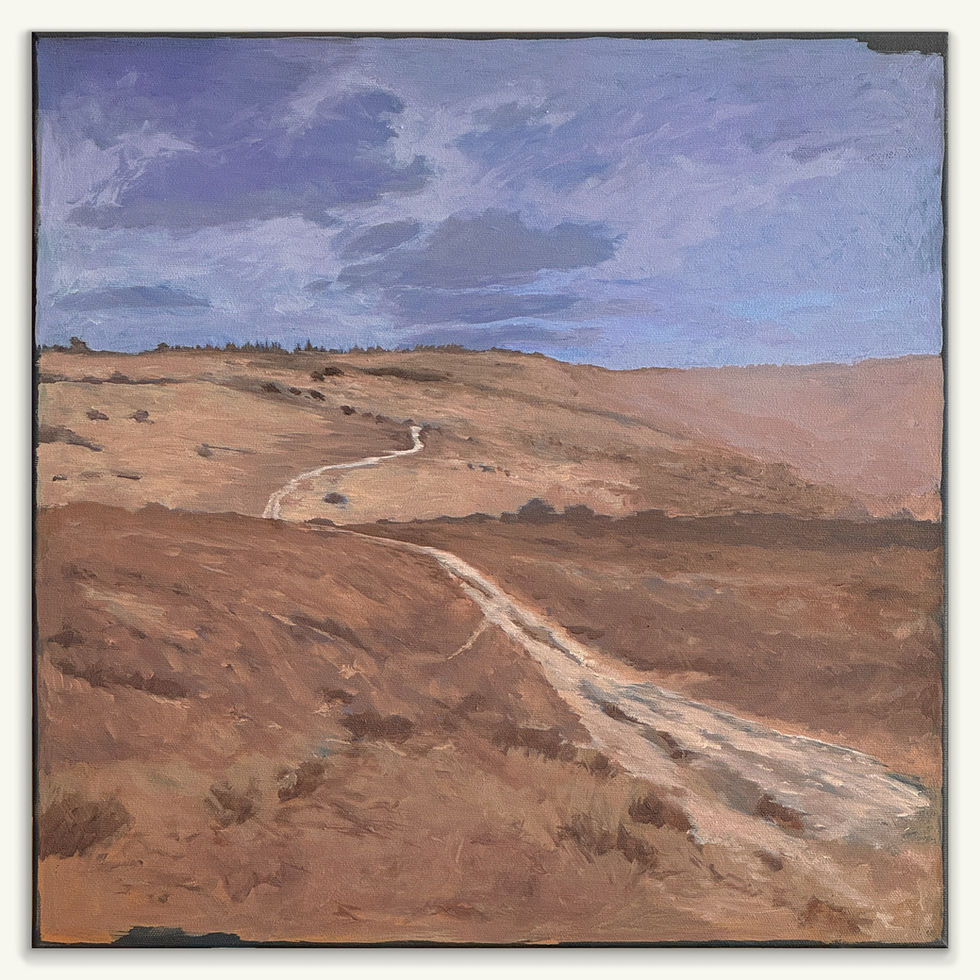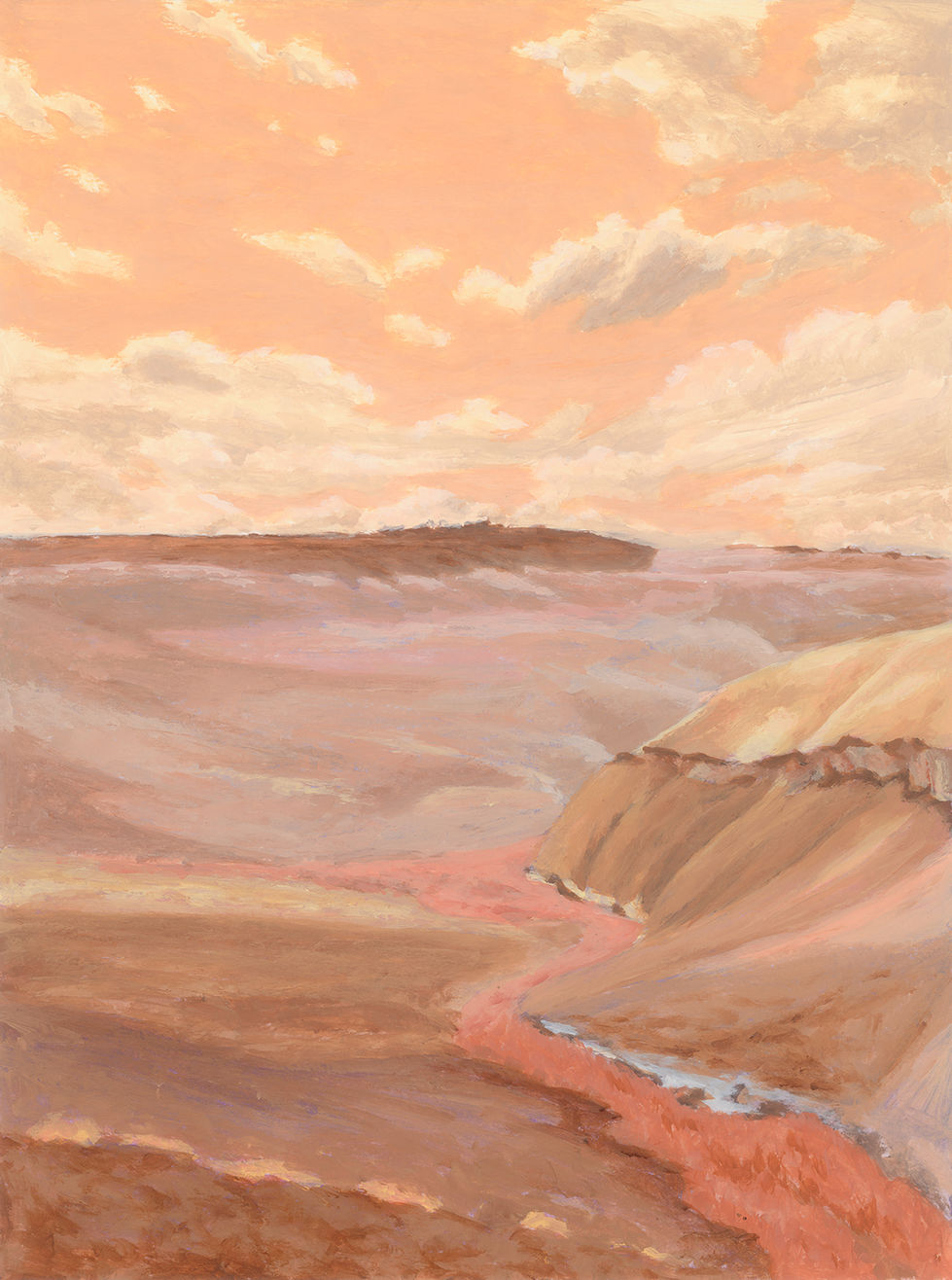Liminal Space
This body of work focuses on landscapes from various natural terrains across Israel, particularly from the country’s edges — such as the Golan Heights, the Galilee, the Arava Desert, Mitzpe Ramon, and the Dead Sea area. These are places Chefetz passed through only briefly, never returning to them, yet documenting them through photography before later turning them into paintings.
Yet the image insists on its painted nature: through the emphasis on materiality, the revealing of layers of color, and the softening of actuality. Along with that, by altering the color palette, inventing some features and omitting others, and abstracting figurative elements, Chefetz seeks to move away from an objective gaze and toward a sense of nomadism and a state of ongoing search.
The perspective in these paintings stretches far toward a distant, airy horizon; The skies often appear in moments of transition, dawn or twilight, filled with light and clouds, detached from the local climate and instead shaped by emotion; Vegetation, if it appears at all and is not edited out, is never painted in green, but rather echoes other tones from within the painting, integrating with the soil or reflecting the sky. These and other characteristics express an elusive duality: tenderness, clarity, and stillness on the one hand, and subdued pain on the other. Out of a reality marked by distress and frustration, in which place seems to disintegrate and lose form, arises a quiet yearning for a life experience of beauty, integrity, and peace.
Art critic and author Sebastian Smee, in his article in The Washington Post from February 21, 2025, about the exhibition Caspar David Friedrich: The Soul of Nature at the Metropolitan Museum of Art, writes:
“Romanticism is about yearning. In states of yearning, there is no middle ground. Stuck in the mundane present, we fix our gaze on the distance, where we hope there is something in which we might lose ourselves, which might offer absolution.”
Chefetz’s landscapes engage with this Romantic impulse, when out of observation of the tangible reality, he constructs scenes that hold personal, emotionally charged drama. Additionally, like the Romantics, he sees in nature a force that is wild, unpredictable, and beyond human control, a presence that stands as a counterpoint to the limits of human ability. But his intention is not to expose the injustices of humankind, as some Romantic artists did, but rather to connect with what nature offers, and to meditatively awaken a memory of cycles and oneness.
Human presence is absent from the paintings themselves, but it is evoked in the titles, suggesting a space of relationships. In this way, the aspiration for wholeness and the desire for belonging, embedded in the image, merge into an interpersonal, intimate, and domestic atmosphere. Thus, the use of the external landscape comes full circle — serving as a mirror for internal terrains of states of mind and hidden wishes.
















